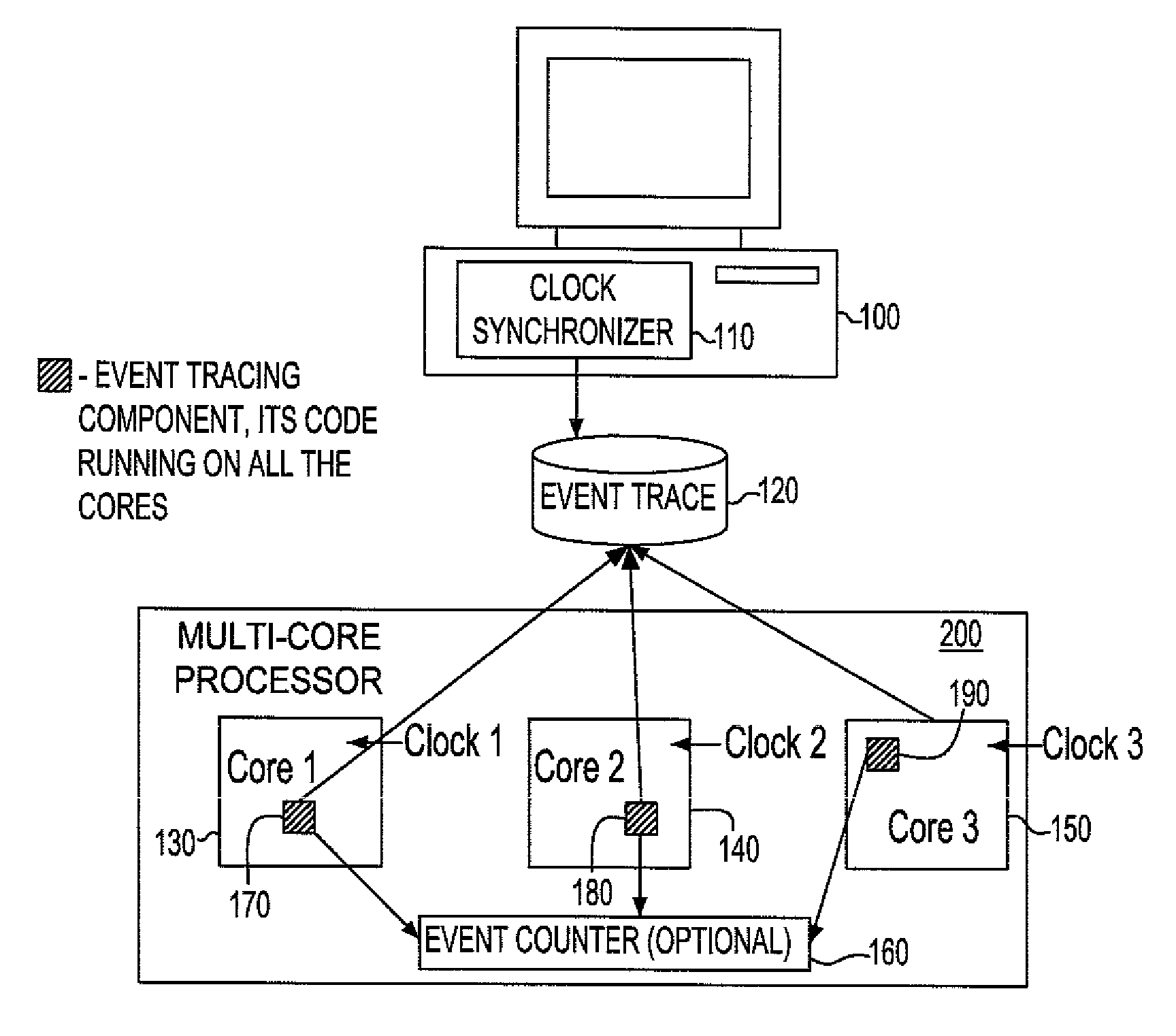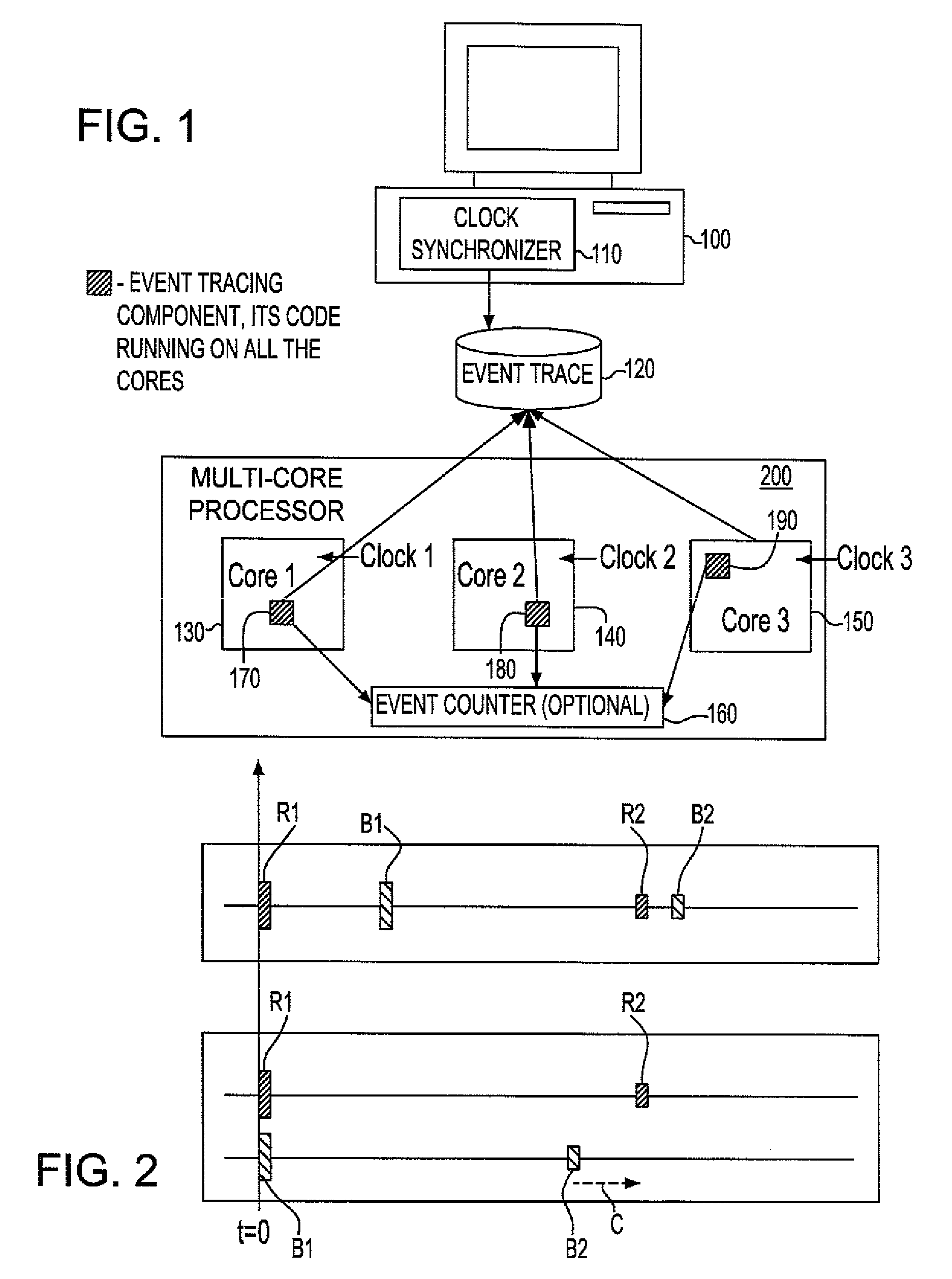Synchronization of independent clocks
a clock and clock technology, applied in the field of clock synchronization system and method, can solve the problems of insufficient performance analysis and visualization, inability of cores to run background processes, and inability to maintain clocks, etc., and achieve the effect of low runtime overhead and code space requirements
- Summary
- Abstract
- Description
- Claims
- Application Information
AI Technical Summary
Benefits of technology
Problems solved by technology
Method used
Image
Examples
Embodiment Construction
[0033]As an example embodiment in which the present invention is implemented is a multi-core processing system shown in FIG. 1. FIG. 1 shows three processing cores, 130, 140, and 150, executing processes that generate events. However, the present invention is not limited to three cores, but it can be a plurality of cores. Each core, e.g. 130, 140, or 150, receives each different local clock and includes an event tracing component, e.g., 170, 180, or 190. The event tracing component records events occurring each core in an event trace 120 and records event data, e.g. a shared counter value (the shared counter will be described later.) in event trace 120. Timestamps are recorded in event trace 120 by the event tracing components in the cores for each event, based on the clock that is used at the time at the core where the event occurred. The events generated include, but are not limited to, a library event such as a call to a library function. Anything that affects program behavior / st...
PUM
 Login to View More
Login to View More Abstract
Description
Claims
Application Information
 Login to View More
Login to View More - R&D
- Intellectual Property
- Life Sciences
- Materials
- Tech Scout
- Unparalleled Data Quality
- Higher Quality Content
- 60% Fewer Hallucinations
Browse by: Latest US Patents, China's latest patents, Technical Efficacy Thesaurus, Application Domain, Technology Topic, Popular Technical Reports.
© 2025 PatSnap. All rights reserved.Legal|Privacy policy|Modern Slavery Act Transparency Statement|Sitemap|About US| Contact US: help@patsnap.com



